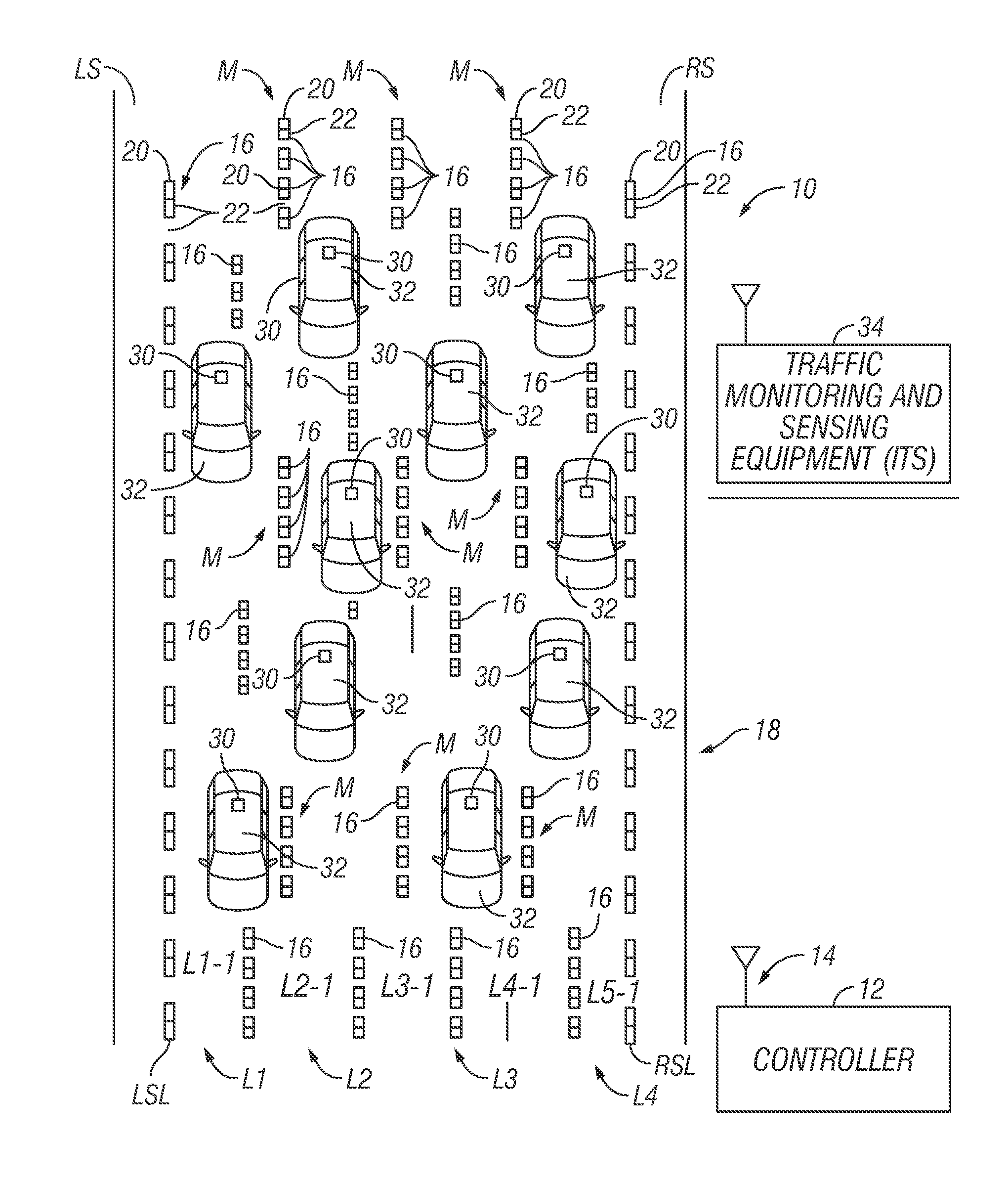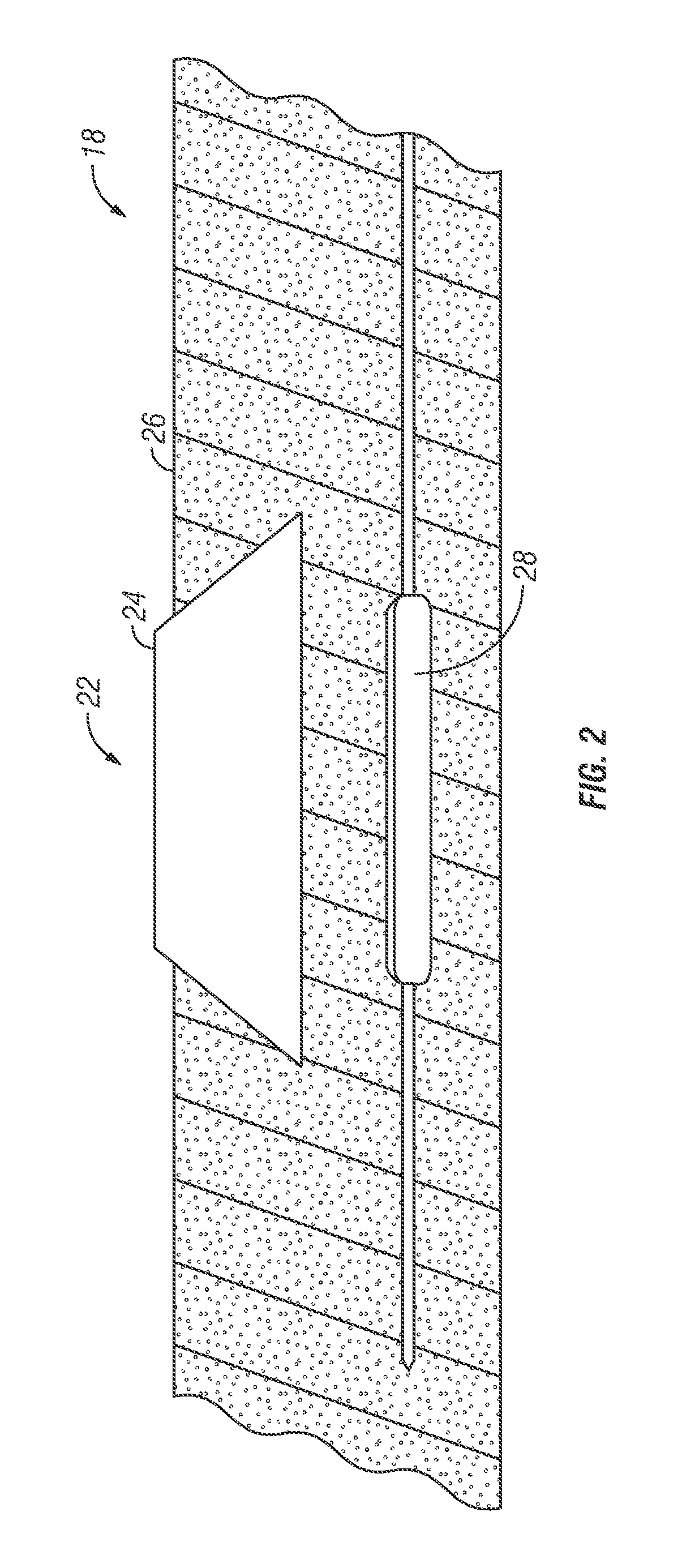System and method for providing traffic congestion relief using dynamic lighted road lane markings
a technology of dynamic light and road lane marking, applied in the direction of traffic movement detection, traffic signal control, instruments, etc., can solve the problems of slow commuting travel, road functions in a much less efficient manner, and the geometrics cannot change or adapt, so as to increase the traffic carrying capacity of the road, reduce traffic congestion, and increase driving safety
- Summary
- Abstract
- Description
- Claims
- Application Information
AI Technical Summary
Benefits of technology
Problems solved by technology
Method used
Image
Examples
Embodiment Construction
[0022]Selected embodiments will now be explained with reference to the drawings. It will be apparent to those skilled in the art from this disclosure that the following descriptions of the disclosed embodiments are provided for illustration only and not for the purpose of limiting the invention as defined by the appended claims and their equivalents.
[0023]FIG. 1 illustrates an example of a system and method for providing traffic congestion relief 10 (known as “SmartRoad”) according to a disclosed embodiment. As shown, the system 10 includes one or more controllers 12. Each controller 12 includes at least one communication device 14, such as a wireless communication device or wired communication device, for communicating information to and from external sources. For example, the communication device 14 enables the controller 12 to communicate with dynamic indicators 16 associated with a road segment 18, such as a portion of a highway or any type of road that permits vehicular traffic...
PUM
 Login to View More
Login to View More Abstract
Description
Claims
Application Information
 Login to View More
Login to View More - R&D
- Intellectual Property
- Life Sciences
- Materials
- Tech Scout
- Unparalleled Data Quality
- Higher Quality Content
- 60% Fewer Hallucinations
Browse by: Latest US Patents, China's latest patents, Technical Efficacy Thesaurus, Application Domain, Technology Topic, Popular Technical Reports.
© 2025 PatSnap. All rights reserved.Legal|Privacy policy|Modern Slavery Act Transparency Statement|Sitemap|About US| Contact US: help@patsnap.com



